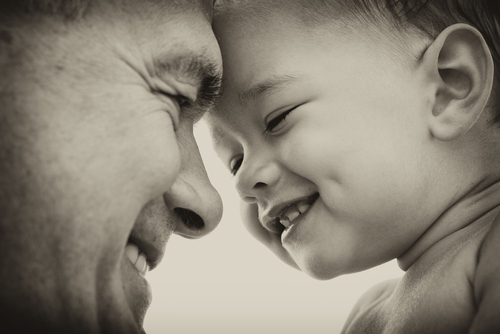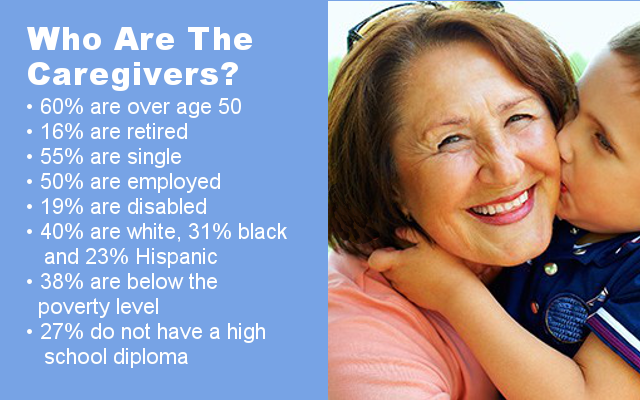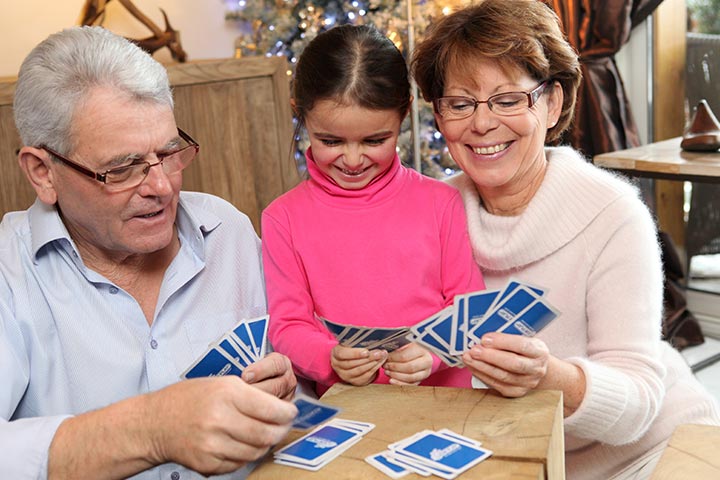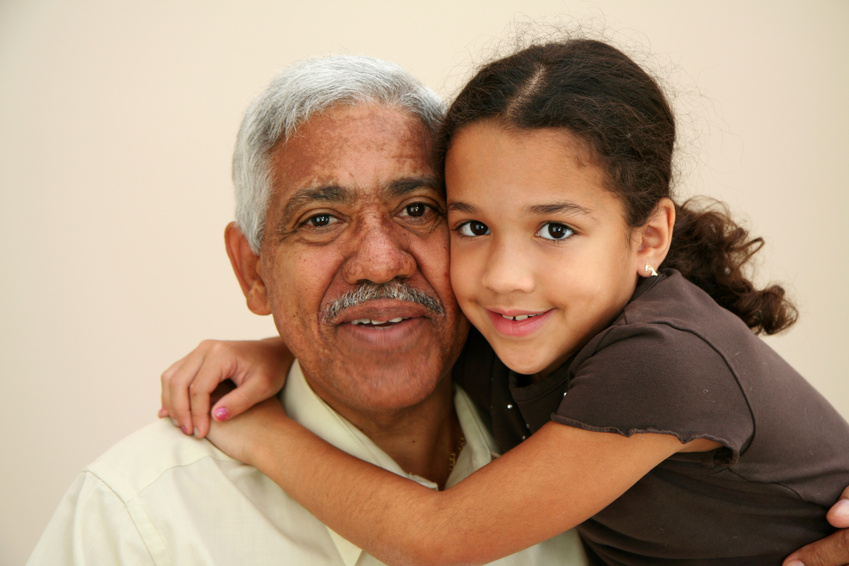Caregiver Support Team (CST) is a service provided by Family & Children’s Aid through the Connecticut Department of Children and Families to support caregivers who are caring for related foster children. In some situations the caregiver relationship might extend to a non-biological family member like a god parent, neighbor or close family friend, but it is always someone with a strong emotional bond2 who is in the child’s close family circle. This is called kinship care.
Supporting the Caregiver and Stabilizing the Family
 Kin caregivers face more challenges as foster parents than non-kin caregivers.[1] They also receive less supervision and fewer services than non-kin caregivers, even though their needs for support may be greater. [2]
Kin caregivers face more challenges as foster parents than non-kin caregivers.[1] They also receive less supervision and fewer services than non-kin caregivers, even though their needs for support may be greater. [2]
“This program is highly needed,” explains Dana Hillman, Caregiver Support Team supervisor.
“For a long time the assumption was that a child being placed with their relative means that there is less likelihood for disruption, and while that is true, that doesn’t minimize the family's need for services. The foster child and biological parents have a lot of clinical supports and services, but the caregivers don’t. They spend so much time being the caregiver, worrying about the child and their family relationships. What about their own self-care? Caregiver Support Teams ask the caregiver, "What can I do to help you? What can I do to help this be an easier process for you?”
“We also do a lot of work with the child because there is no way you can help the caregiver without understanding the child’s needs, but the caregiver is the primary client. We are there to be the caregiver’s clinician. We look to them to tell us what they need us for and then we try to provide that for them.”
Dana attributes part of the success of the CST program to being with the family from the beginning of the process. “We’ve been fortunate that any time DCF makes a kinship placement, they automatically refer to our program. If it’s low key involvement at the beginning, that’s ok. We want to be there so if there is a crisis, they are not calling 911, or a stranger; they are calling their CST worker who already knows them, who they trust and have a relationship with.”
“We provide services for six months. The first month is spent assessing the more long term needs of the family along with a lot of case management focused on helping to stabilize the family. They have a lot of logistical issues they are dealing with…What about day care? How am I going to care for this child? Where will they sleep? How do stipends work?”
“As far as the services we provide, CST is not a program that says “this is the plan” and every family follows it. Every family is different. For one family it may be a lot of clinical work; for another it’s navigating the DCF system. Mostly, we do a lot of advocating for them, a lot of helping them understand and navigate the system and a lot of linking them to other supportive services in the community they can use long term, so when we are gone, they know who to turn to and where to find help. We do everything we can to support the caregiver and stabilize the family. There is very little that we won’t do.”
Who Are The Caregivers?
 According to U.S. Census Bureau data, kinship caregivers are more likely to be poor, single, older, less educated, and unemployed than families in which at least one parent is present. 4
According to U.S. Census Bureau data, kinship caregivers are more likely to be poor, single, older, less educated, and unemployed than families in which at least one parent is present. 4
“Statistically it is grandparents who we see as the most common caregiver,” states Dana. “The average age for kin caregivers is in their 50s. We have seen a trend where the caregiver is the person who has historically been identified as the caregiver for the entire family. That means they may already have other people living with them or they have been the caregiver for a number of other family members throughout the years.”
“We often work with caregivers who didn’t plan to take something like this on at this part of their lives. It was kind of thrust upon them and now their back is against the wall,” explains Dana.
“It has been eye-opening seeing the caregiver’s own internal conflict about what’s best for their family. You have to remember, it’s a huge role change in the family. There are boundary issues with the biological parents. The caregiver may feel anger, resentment or disappointment toward the biological parent, who may be their own child. The caregivers may still have their own children at home who may be affected.”
I Have to Do What?
“All of a sudden DCF is involved and it comes with a whole new set of rules,” explains Dana. “DCF says, “I need to do a walk-through of your home… I need to see where you keep this… I need your financial information… I have to do a background check on you…” and this is for a grandparent who has potentially been caring for this child unofficially all along.”
The Department of Children and Family's Foster Care Regulations were re-written in May of 2011 to make the licensing standards more inclusive of relative providers and more sensitive to a family’s specific needs. For example, the new regulations are less strict regarding family income requirements and in regard to children sharing bedrooms. 2
“One thing we do that is huge is helping the family understand the DCF process. We really try to be that middle man between the foster family and DCF, maintaining a good relationship with both. Because of that, we can help the foster family understand things like, “Why do I have to get permission to cut my grandchild’s hair?”
In a kinship arrangement, the caregiver is not the guardian. The guardian is either DCF or the biological parent. Despite the child being placed with them, the caregiver still has to seek permission from DCF or the biological parent before making decisions on the child's behalf.
DCF works towards a timely reunification with the biological family. Dana stresses, “They really work hard to try to see unification happen, but ultimately the child needs stabilization; they cannot linger in the system. The caregivers can’t go on for years needing permission for haircuts and getting background checks for overnights with their friends. DCF has to make those decisions quickly. If the biological parents are not doing what they need to in a reasonable amount of time, and the child is doing well, DCF will transfer guardianship to the caregiver. “
Why Should I Trust You?
 “Some caregivers have a really hard time getting past the initial mistrust,” reveals Dana. “DCF involvement, which may be new to them, is combined with us coming into their lives...their homes. It is natural for people’s defenses to be up in the beginning.”
“Some caregivers have a really hard time getting past the initial mistrust,” reveals Dana. “DCF involvement, which may be new to them, is combined with us coming into their lives...their homes. It is natural for people’s defenses to be up in the beginning.”
“It is strange for them to have someone come in and tell them how to parent. We are a young team. They look at us and tell us, “I am a grandparent! I’ve raised my child. I raised my grandchild and now you kids are going to come in and tell me what to do? Yes, we do offer some parent education, if it is needed, and if it is wanted."
“We had one case that was extremely difficult. The caregiver did not want the services. She was adamant she absolutely did not need them. She did not even want to schedule the first session. It took that one time, one crisis, for her to reach out ans say, 'I guess that is what they are here for'.”
“You start out with families who say they don’t want it, and by the end they are looking forward to you coming every week. That is one of the best endorsements we can have.”
We Are Here For You
“Working with these families has definitely made me more compassionate for what relative caregivers have to go through. It can be so intrusive in their lives. They are doing something good, but a lot of times it doesn’t feel that way because of all the scrutiny they are under.”
“The service we provide is only as successful as what the family will bring to the table. We cannot force them to recognize the need for support, but if the caregivers don’t feel supported, it is hard for them to see the good in what they’re doing.”
It’s Worth It

Research shows that kinship care benefits children in a number of ways:
- Kinship care reduces the trauma children may experience when they are placed with strangers by enabling children to live with people they already know and trust.[4]
- It creates continuity by allowing them to maintain connections with extended family, siblings and community.
- Children in kinship care have a more positive opinion of their placement and are more likely than children in non-kinship homes to report they like their caregiver and they wish for this to become their permanent home.[4][5]
- Children in kinship placements are more stable and experience fewer placement moves than children in non-kinship care.[6]
- Children in kinship care are more likely to be placed with siblings.
- Children in kinship care have fewer behavioral problems, as rated by caregivers, than their peers in other out-of-home care settings.[7]
Connecticut Department of Children and Families Commissioner Joette Katz stated, “Leadership recognizes that the safety, permanency and well-being of children and youth are best achieved within the context of their own homes and communities. When placement is needed, research has taught us that children placed with relatives experience much more positive results over the long term, including greater stability and less placement disruption, better prospects of remaining with siblings, greater or equal safety, and more timely permanency.”[8]
Dana has already seen the positive effects in the first year that the Caregiver Support Teams have been in operation. “The state has reported they’ve seen the numbers for permanency become more stable and a large portion of our families appear to better utilize their support systems by the time we close their cases.”
Perhaps the best recommendation comes from a caregiver who reported on their satisfaction survey, “The support the CST therapist gave my family and I will always be remembered and appreciated.”
“I have such an amazing team. I have a group of very compassionate, very relatable therapists. And that’s important because you are going into somebody’s home. They develop a relationship with this caregiver and child at such a turning point in the roles in their lives. It’s so important that my workers go in there with openness and compassion. And they really do.“
Sources:
[1] Foster Care Statistics 2012, Child Welfare Information Gateway
[2] Green, Rob, The Evolution of Kinship Care Policy and Practice, The Brookings Institution, Journal Issue: Children, Families, and Foster Care Volume 14 Number 1 Winter 2004
[3] Populations Reference Bureau’s analysis of the 2011 Current Population Survey Annual Social and Economic Survey
[4] Mallon, G..Tools for permanency: Tool #4: Kinship care. National Resource Center for Family-Centered Practice and Permanency Planning
[5] Conway, T., & Hutson, R. Q. (2007).Is kinship care good for kids? Washington, DC: Center for Law and Social Policy
[6] Webster, D., Barth, R. P., & Needell, B. (2000). Placement stability for children in out-of-home care: A longitudinal analysis.
[7] Rubin, D. M., Downes, K. J., O’Reilly, A. L., Mekonnen, R., Luan, X., & Localio, R. (2008). Impact of kinship care on behavioral well-being for children in out-of-home care. Archives of Pediatrics and Adolescent Medicine
[8] State of Connecticut Department of Children and Families Kinship Care Report, March 13, 2012